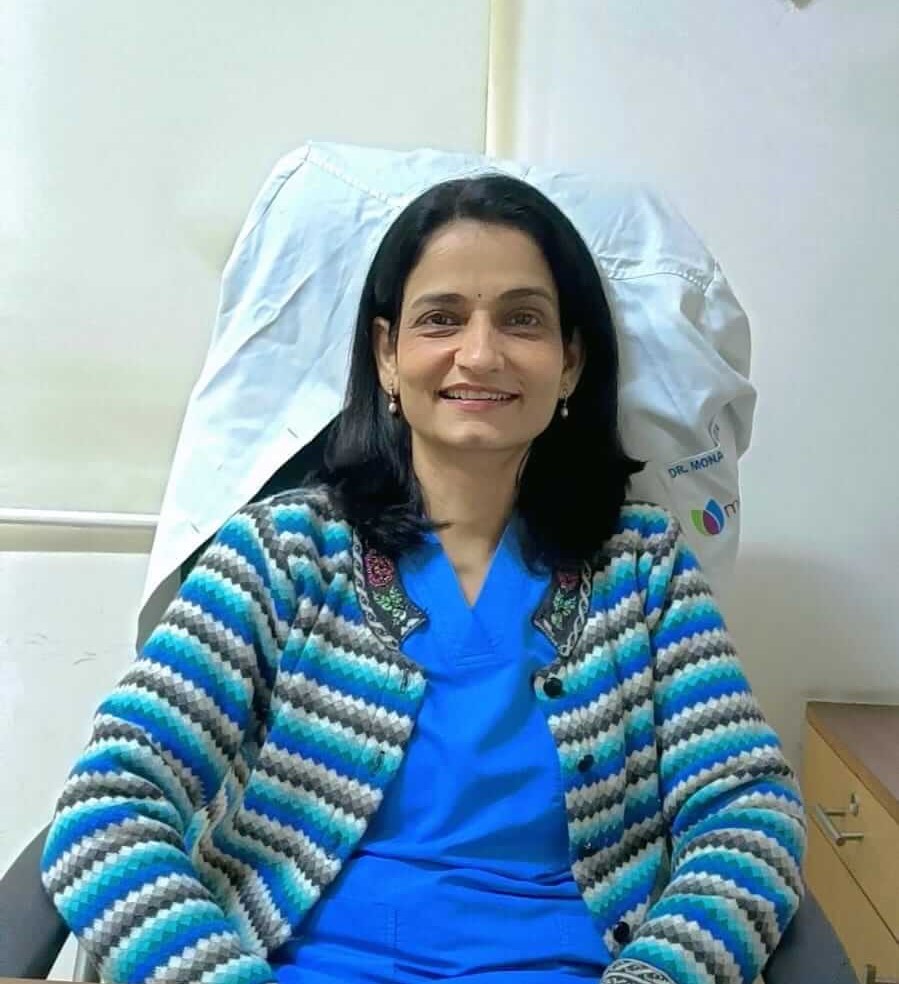What is Polycystic Ovaries (PCO)?
Every woman has Ovaries and they ovulate during her reproductive age. During ovulation, follicles are formed inside the ovaries which contain very microscopic eggs. In a normal ovulation scenario, usually (2-5) Follicles are formed which can grow up to 30 millimetres in Diameter depending upon the stage of the menstrual cycle. However, in a PCO situation about 12 or more of small-sized follicles are formed inside the ovaries. This excessive formation of follicles is also now known as the “Pearl Necklace Pattern” or Polycystic Ovaries.
PCO Symptoms:
- Few Women experience irregular periods or ovulation and mild pelvic pain.
- However, many women experience no PCO symptoms at all.
PCO Diagnosis:
Below are the following 3 Methods for diagnosing the presence of Polycystic Ovaries-
- Vaginal Ultrasound-A Vaginal Ultrasound is the simplest way to diagnose the presence of Polycystic Ovaries. In this painless procedure, an ultrasound probe measuring about 1 Inch in width, coated with a lubricating gel is gently inserted into the vagina of a woman. The vaginal probe is placed on the wall next to the ovary and it captures high-quality images of the Ovaries. Vaginal Ultrasound is not recommended for sexually inactive women as it can tear the hymen. Although it is still a painless process, it can cause bleeding as is the case during first-time intercourse. For Married and/or sexually active women, Vaginal Ultrasound is the simplest way to detect the presence of Polycystic Ovaries.
- Abdominal Ultrasound-An abdominal ultrasound is an imaging ultrasound test that uses sound waves to see the inside of an abdomen. An abdominal ultrasound is an industry-accepted benchmark to check for Gall Bladder, Intestines, Liver, Pancreas, Kidney stones, Tumours, Blood vessel Blockages and Ovaries. A woman undergoing an abdominal ultrasound has to have a full Bladder and the ultrasound is done on the lower abdomen area, ideally one needs to avoid food and drinks for 8 hours before an abdominal ultrasound as it helps prevent the presence of gas in the abdomen, which can affect the results.
- Laparoscopy-Polycystic Ovaries can also be investigated through laparoscopy, although it is recommended only in select exceptional cases. Laparoscopy is a minimally invasive procedure done under general anaesthesia to insert a small telescope to investigate the uterus, fallopian tubes and Ovaries. Laparoscopy is typically done to investigate abnormalities in the fallopian tubes, ovaries or uterus to assess unexplained causes of infertility. It is generally the last advised technique to diagnose polycystic Ovaries but it provides a very clear 3-Dimensional view of the Ovaries.
What is Polycystic Ovaries Syndrome (PCOS)?
PCOS is a metabolic disorder characterized by abnormal male hormone levels in women. Women suffering from PCOS show high levels of male hormones called Androgens, as well as high levels of Estrogen. In PCOS women we also find Resistance to insulin, the hormone that controls blood sugar level, is also a common symptom in those who suffer from PCOS.
As an infertility specialist, it surprises me that many infertility Doctors in India talk and share literature about Polycystic Ovaries & PCOS which is not factual. Even the internet is flooded with misleading myths about PCOS Syndrome without any evidence-based conclusion. As a consequence, most women have alarming misinformation about Polycystic Ovaries, causes of PCOS, diagnosis, symptoms and of course PCOS treatment. All in all, misguided information about Polycystic Ovaries has raised fear, stress and anxiety among women. As an infertility Doctor, I thought it is important to share meaningful and factual information about PCOS so that the words “Polycystic Ovaries” do not earn the Life-threatening status that is currently being made out.
Also Read: PCOS Treatment: How to Cure PCOS Permanently
PCOS Symptoms:
- Irregular Periods
- Difficulty in Conceiving naturally
- Excess Hair Growth in Unexpected areas of the Body (Hirsutism)
- Excess of Male Hormones “Androgens” May Make some Skin Types More Prone to Acne
- Overweight/Obese
- Mood Disorders: Anxiety & Depression
These are some common PCOS Symptoms.
What is the Difference between PCO & PCOS:
PCO vs PCOS, they are not the same. It is important to note that if a woman has Polycystic Ovaries, it does not mean that she is suffering from PCOS. About 25% of women are known to have polycystic ovaries but only a handful may exhibit symptoms of PCOS.
PCOS is an ovarian dysfunction syndrome wherein the ovaries start producing an excess of male hormones along with the appearance of Polycystic Ovaries. Excess of Male Hormones can be measured through a Blood test but a common physical indicator is the presence of excessive physical hair. One must note that Excess of Male Hormones called androgen can also be caused by the adrenal gland producing excessive levels of the male hormones, rather than by PCOS.
The following equation describes what is PCOS.
PCOS = Male Hormone Excess + Polycystic Ovaries
PCO VS PCOS:
| Topics |
PCO |
PCOS |
| Chances | Up to 35% of women of pregnant age have PCO | Up to 15-18% of women of pregnant age |
| Type of Disease | Excessive formation of follicles (>12) | Excess of Male Hormones “Androgens” |
| Risks | Difficulty in Conceiving naturally | type 2 diabetes, high blood pressure, heart problems, and endometrial cancer |
| Early Symptoms | irregular periods or ovulation and mild pelvic pain discovered through ultrasound | Hirsutism, irregular anovulatory cycles, acne, weight gain around belly, and diabetes. |
| Fertility | Conception may not be difficult | Struggles with infertility and have problems falling pregnant |
| Miscarriage Rate | Normal | Higher |
Also Read: PCOS Diet Chart
WHAT IS MALE HORMONE EXCESS?
There are two categories of Sex Hormones:
- Female Hormones: Oestrogen& Progesterone.
- Male Hormones: Androgens.
Every Human Being produces the above two Hormones and it is only the amount of Hormone levels that differ between a Male and a Female. Women need male hormones such as testosterone for the normal functioning of menstrual cycles. However, a small percentage of free testosterone is dissolved in the bloodstream and is basically biologically active. Women with PCOS tend to have higher blood levels of free testosterone than women with normal ovaries leading to skin problems like acne and excessive body hair.
Also Read: PCOD VS PCOS
POLYCYSTIC OVARIES DO NOT MEAN INFERTILITY
Women with Polycystic Ovaries are able to conceive naturally if they have menstrual cycles every (4-8) Week. Women with Polycystic Ovaries who are unable to conceive must visit an infertility specialist to check for other female infertility issues like Block Fallopian tubes or male infertility factors related to sperm Count and/or sperm motility.


